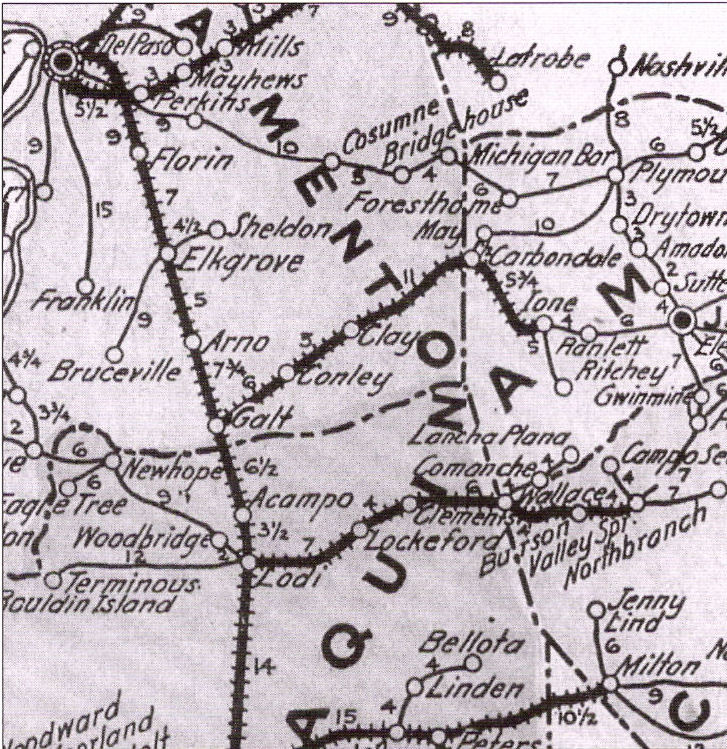





|
|
|
AMADOR CITY AREA TOURS
CEMETERIES |
|
AMADOR CITY LODGING |
|
|
Carbondale, Amador County | ||
|
In the 1860s a substantial and determined effort was made to locate coal deposits to fuel California's infant industries. At Carbondale brown lignite was discovered at a depth of 70 feet. These deposits were extensive and was a large portion of the clay and alluvium in both lone and Jackson valleys. At Dutschke Hill, a few miles distant, two seams, approximately 5 feet in thickness, are exposed. Excavation for a clay pit revealed their edges in a roo-foot depth. | ||
Carbondale Railway Station Earlier known as Buckeye, Carbondale was situated north of Ione. Shown here is a stage in front of the railway station. In 1876, The Central Pacific Railroad built the Amador Branch Railroad, a 27.2 mile line from Galt to Carbondale, then extended it into Ione. The photo below showing the map of the Railroad to Carbondale. |
|
|
|
Shafts were pushed down to mine this material and subsequent to the extension of the railroad to lone in the 1870's, transportation was at a hand; the coal was shipped from there over the sections of Northern California that were served by rail. As a result the town grew and, quite understandably, was named Carbondale. The brown coal or lignite was used for furnaces at that time to heat private homes and apartments. It was, however, somewhat deficient in BTU's for raising steam in locomotive and steamship boilers. |
|
To serve this demand, several companies at Carbondale installed machinery for making briquettes. These briquettes, produced by extrusion at tremendous pressures, were a product that fulfilled the need for a uniform and entirely clean fuel having the required heat content. They were widely used, both for power and for home heating. The town grew again, beyond its previous limits. It had an added assist from the fact of being in the center of a great expanse of cow country and being a rail head. |
|
|
|
In 1911 there were three large warehouses on one side of the main street. On the other was a block of tall, two-story wooden Victorian buildings with plank sidewalks, post-supported upper balconies, watering troughs, and hitching racks in front. There were signs designating the usual hotel, general store, livery and feed stables, post office, Odd Fellows' Hall, etc., and swinging doors on the saloons. Later, California's booming oil production displaced coal as a fuel on the railroad and in most operations in industry. This happened a full generation before the transition in Mid-Continent and the East. The briquette producers were forced out of business. One, no doubt the most rugged and resourceful, survived until 1916. Passenger service was discontinued at the railway station very early in the 20th Century. Freight was suspended in the 1920's. The warehouses and the railway station were torn down. Until a few years back, a siding served several shacks of the maintenance crews. These are now gone. Somewhere in the intervening time the town disappeared. The Carbondale rural school vanished, and the few that it may have served were bussed into Ione. The old shafts north of Carbondale are identified by the gouge piles and pieces of machinery that once was used to produce briquettes. Something that still remains are the pens, corrals, and runways used for loading the cattle, and still very much used today. |
||
|
Information, photographs courtesy of the Amador County Archives, The Historical Marker Database, and the Chronicling America Database CONTACT US
|
||


